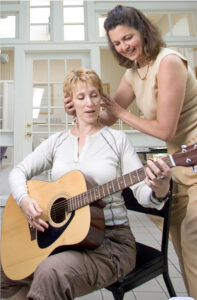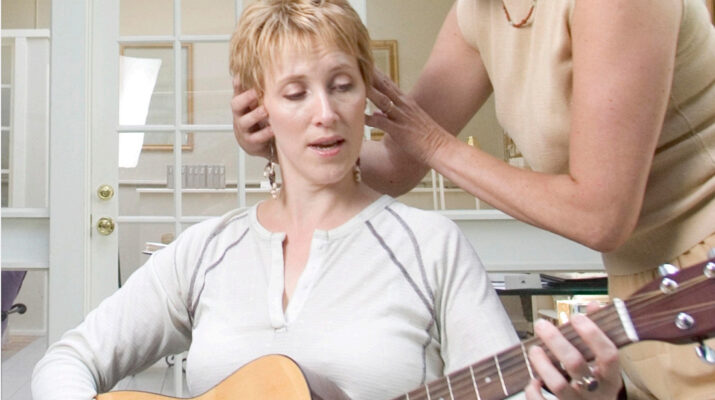How this modality can help improve how you feel through how you move.
By Deborah Jeanne Sergeant
 Posture habits affect how your body moves and can cause stiffness, tension and stress.
Posture habits affect how your body moves and can cause stiffness, tension and stress.
The Alexander Technique, developed a century ago by F.M. Alexander, teaches students about how to improve and self-correct their posture to foster proper movement, improve performance and alertness and relief chronic issues caused by poor posture.
Many of the people seeking to learn through the Alexander Technique are involved in music performance, acting, dance or other performing arts because of the toll these careers take on the body.
Kathryn Miranda began studying Alexander Technique 38 years ago and became certified to teach it 35 years ago. She operates Alexander Techniques of Syracuse and teaches at SU in the music and theater departments.
“It’s all about becoming aware of habits that interfere with our nature as living organisms that has systems to help us be upright and well with breathing, good movement patterns that aren’t going to add up to stress,” Miranda said. “It is so foundational how we move and how we respond to a gravitational field to keep all those parts in good relationships with each other. It takes a brilliant brain, which we have. But it’s a social brain.”
 This means that people pick up bad movement and posture habits like slouching, standing asymmetrically, squinting the eyes and sitting in chairs that do not fit the body well. Instead of positioning the body in a stiff postural position, students are free to move and without effort. It’s similar to how young children move freely and without effort or thought about posture.
This means that people pick up bad movement and posture habits like slouching, standing asymmetrically, squinting the eyes and sitting in chairs that do not fit the body well. Instead of positioning the body in a stiff postural position, students are free to move and without effort. It’s similar to how young children move freely and without effort or thought about posture.
Self-awareness is the first step in AT as students focus on how they’re breathing and how they’re positioned while typing, playing an instrument or doing anything at all. A student may notice he’s holding his breath, tapping a foot or suspending his shoulders. Making the posture more comfortable and easier is the next part of the lesson, along with developing a helpful and healthful habit that holds the body comfortably and without causing problems.
Miranda helps students find the helpful positions and develop the healthful habits.
“If the person gives mindful attention and has an intention to allow change, that’s huge,” she said. “That involves the retraining of the brain and that’s where changes will be much more lasting. With my hands, I encourage and invite muscles to release and lengthen. That’s an experience they get but that doesn’t take them forward into changing their life as much as what they learn to do for themselves.”
As students continue to learn, they apply AT to other things they do all day, such as sitting in an armchair, walking across the room, standing at the kitchen sink to wash dishes.
In addition, musicians and athletes often come in to improve their performance. And like their professional pursuit, it takes practice to improve in AT. But AT is a way of approaching everyday movement, whether sitting, standing, walking, riding a horse, washing dishes or anything else. This may include tightening, bracing, straining, generally making things harder than they need to be. These responses are often evident during stressful times but can surface at any time.
“A lot of times, I start off not with the technique, but to find out their issues,” said Victoria Quesada, certified Alexander Technique instructor in Hamilton. “Is it pain, a performance issue or posture? What’s the reason they’re coming? Then we talk about the technique.”
She teaches people to “move from the inside out” based upon their awareness of postural and movement inconsistencies and shortcomings. One example is a student who tilter her head because she believed her nose looked better at that angle. The habit unknowingly caused her to experience neck pain.
“The body was designed a certain way and if you use it that way, you optimize your health,” Quesada said. “Posture is sort of an end product, not the goal. The goal is to use your body the way it was designed. Some people come to it for posture, but most because they have a pain issue. I’ve had musicians and other performers come. Some have come for appearance. It improves your appearance. If your body is lined up the way it’s supposed to be, you look taller and thinner.”
Eventually, good movement and posture habits become second nature so that those using Alexander Technique don’t even think about it. But Quesada said that they have to be committed to making the change.

